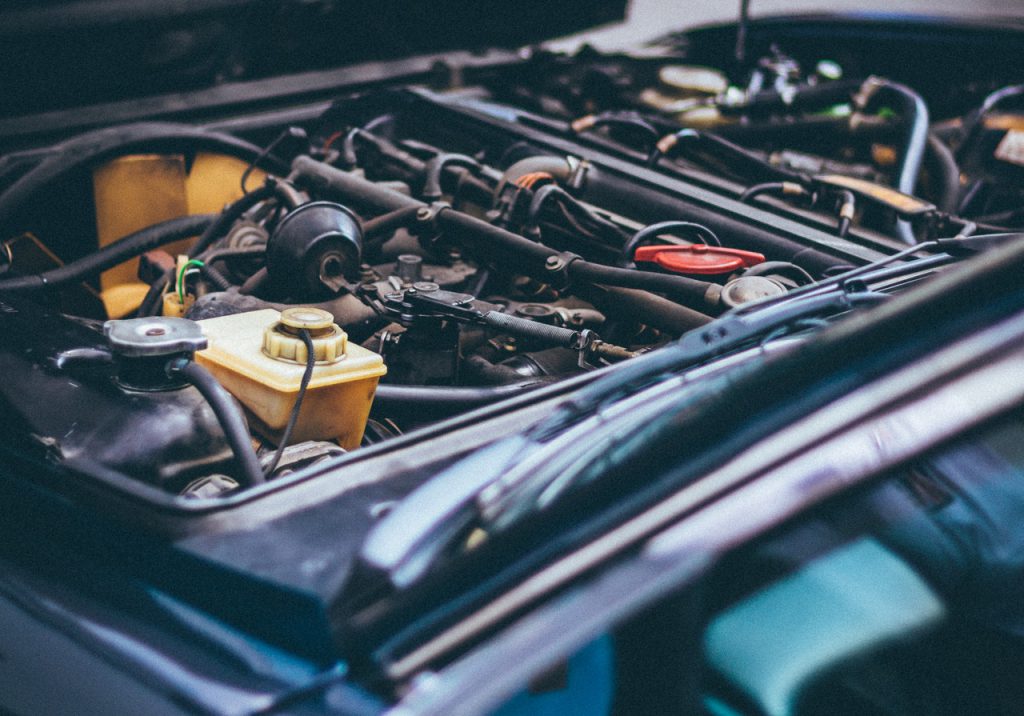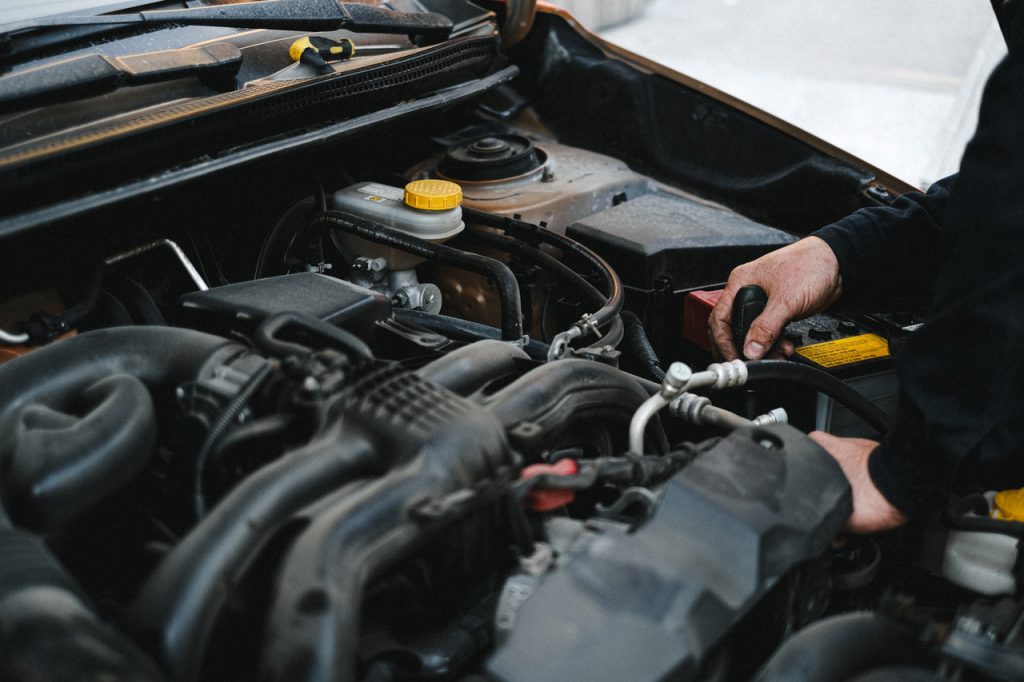As all car owners in the world, we love classic cars, and they are reliable thanks to the standard mechanical fuel pumps. Without a doubt, the mechanical fuel pump is one of the most well-known systems in the automotive industry. However, nothing lasts forever, especially with automobiles and car components. And in this case, the mechanical fuel pumps. So before the system is out of date, let’s understand more about this system. And if you are using one, our car expert will also provide you how to troubleshoot the car components.
Contents
How the Mechanical Fuel Pumps Work
Normally, mechanical fuel pumps have carburetors to go along with the system. And this is how they work together.
Basically, when the engine is running, these fuel pumps siphon the fuel from the gas tank, then push it to the carburetor. In order to work, there is an eccentric lobe on the camshaft taking responsibility for the operation of the pump. In some cases, this part will lobe on the camshaft gear. As far as we know, all mechanical fuel pumps have two types of engines: V8 engines and inline six cylinder engines, and they have different locations for the eccentric. With the V8 engines, car owners have a push rod between the fuel pump and the camshaft eccentric to move the fuel pump arm. On the other hand, the eccentric controls the fuel pump arm directly on six cylinder engines.
Alright, now that we know how this mechanical fuel pump works, it is time to know the problems around it as well as how to replace this system.
Troubleshooting the Mechanical Fuel Pumps
Vapor Lock
The first and most common issue with the mechanical pump is the vapor lock. This is what happens when your vehicle is idled for quite some time and the engine gets lag during acceleration. If you as well as your fuel pump system have vapor lock, you can see various symptoms like dry carburetor air horn, none accelerator pump discharge, as well as lack of fuel pressure.
In this situation, our best advice is to check the tank first. Many people will rush to fill the tank without checking the lags from the engine as well as the repeated jerks, and that is a big mistake. The main cause of this issue might be fuel foaming, which happens when cold gas contacts a hot carburetor fuel bowl. This is terrible since the gasoline can alter volatility due to the alcohol or octane boosters inside. Along with that, it makes the car hard to start and drive. Even worse, the alcohol will corrupt the car parts in the fuel system, alter the mixture of fuel and air, as well as clog the filter of the fuel.
Another thing we can see is the engine. With vapor lock issues, car owners will have misfire engines. Sometimes it even runs lean, stalls or hesitates. Either way, the fuel pressure will drop, making the car impossible to run or start.

Leaking Oil
Another issue of mechanical fuel pumps is leaking oil. In many vehicles, the fuel pump actuator arm will move through the timing cover. The design creates the constant rotating motion of the crankshaft or camshaft, which moves the arm. However, it also creates an opportunity for leaking oil.
To be more specific, there is a tight seal showing up where the fuel pump mounts to the timing cover of a gasket. In the long term, the vibration of the engine will loose the bolts in this area. This will create a chance for oil to drip out. If car owners do not check the car in a long time, the leak will continue to leak out, creating detergents in the engine oil and damaging the seal. The only way to fix this is to tighten the bolt. In cases when the seal is damaged, just replace it and we can fix the issue.
Damaged Pump
This time it might be the pump itself, so if we cannot see anything wrong with the lock or find any leaking oil, the pump is the factor we need to check. In order to check the pump, car owners must first disconnect the line of the fuel at the carburetor, then place it in a container or bag. In order to examine if the pump is pushing any fuel through the line or not, we need to crack the engine. If there are any strong spurts of fuel, that means the pump is still working. On the other hand, if there is a weak stream or no fuel at all, the pump is having trouble. It could be something blocking the fuel line or plugging the fuel filter.
Another method to check the pump is to remove the air cleaner and pump the throttle linkage while checking the carburetor’s throat. If the pump is working normally, it will push a strong spurs of fuel into the carburetor. Nevertheless, if nothing appears, car owners need to check the gas in the tank, fuel line as well as fuel filter since there might be something blocking the way.
Along with that, the fuel pump pressure is another crucial factor to examine. We can perform this task by connecting the fuel pressure measurement tool to the outlet of the pump, crank the engine and note the reading on the tool. If there is zero pressure or way less than recommendation on the gauge, it is time to change the pump.
Ticking Noises From Pumps
Last but certainly not least, if any knocking or ticking sounds come out, there might be a broken spring on the fuel pump’s arm.
How To Replace Mechanical Fuel Pumps
Remove the Bolt
As we can see, there are usually holes in the passenger side front of the engine, two normally. Car makers create them for front engine mounts. These top bolts can connect with the fuel pump push rod, so in order to remove the mechanical fuel pumps, we need to take these bolts off first. Ideally, we want to remove the bolts holding the push rod.
SEE MORE
Install the Lobe
Have you ever wondered what helps the fuel pump to pump fuel? The secret for this is the lobe on the camshaft. This makes the fuel pump push rod with the purpose of moving in and out. So in order for the whole system to work, car owners need to place this lobe in a position that the rod is furthest back and away from the pump. This makes installing the pump much easier.
After that, we need to tighten the bolt with the longer bolt in the upper hole. The ideal tightness is until the bolt can hold the push rod. However, we want it to just be finger tight to avoid bending or nicking the push rod. Following the action, car owners can remove the fuel lines, plug them to avoid any dirt from entering. Also, remove the fuel pump mounting bolts and the pump after. If you are a careful driver, we recommend cleaning all the way around the hole of the fuel pump in the spacer.
In some situations, we cannot access the hole in the front of the block. In order to fix this, we take the spacer late as well as the push rod off, then insert some heavy grease on the push rod. This grease is responsible for holding the pushrod to the cam.
Reinstall the Spacer Plate
After the previous step, we want to reinstall the spacer plate and use a new gasket. The next step is to insert the fuel pump arm into the hole in the spacer plate we mentioned earlier. And when the arm is in its position, it is time to push against the pump’s return spring pressure. This action will get the pump’s mounting holes in the correct position to start the bolts.

Help the Push Rod Move
Last but certainly not least, we want to help the push rod move. In order to perform this task, car owners need to loosen the bolt that holds the push rod in position. Along with that, we need to rotate the engine just a bit in order to let the fuel pump cam retract the push rod. After that, it is time to tighten the bolts evenly and tightly. Keep doing this until the spacer meets the pumps.
Another thing to keep in mind is to take the longer bolt holding the push rod off. It is better to replace the original bolt into the same hole along with sealer on the threads.
And now, we can reattach the fuel lines.



